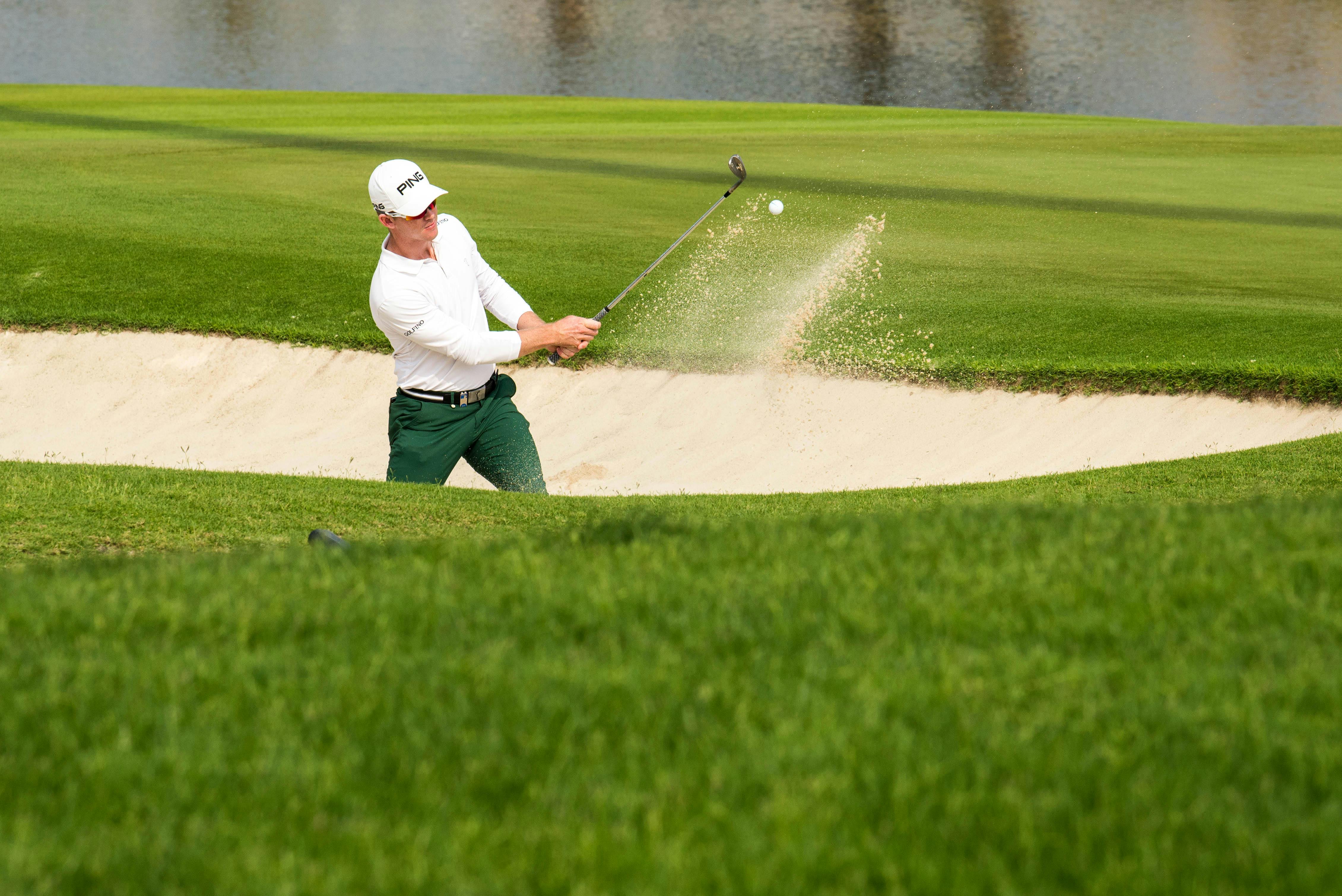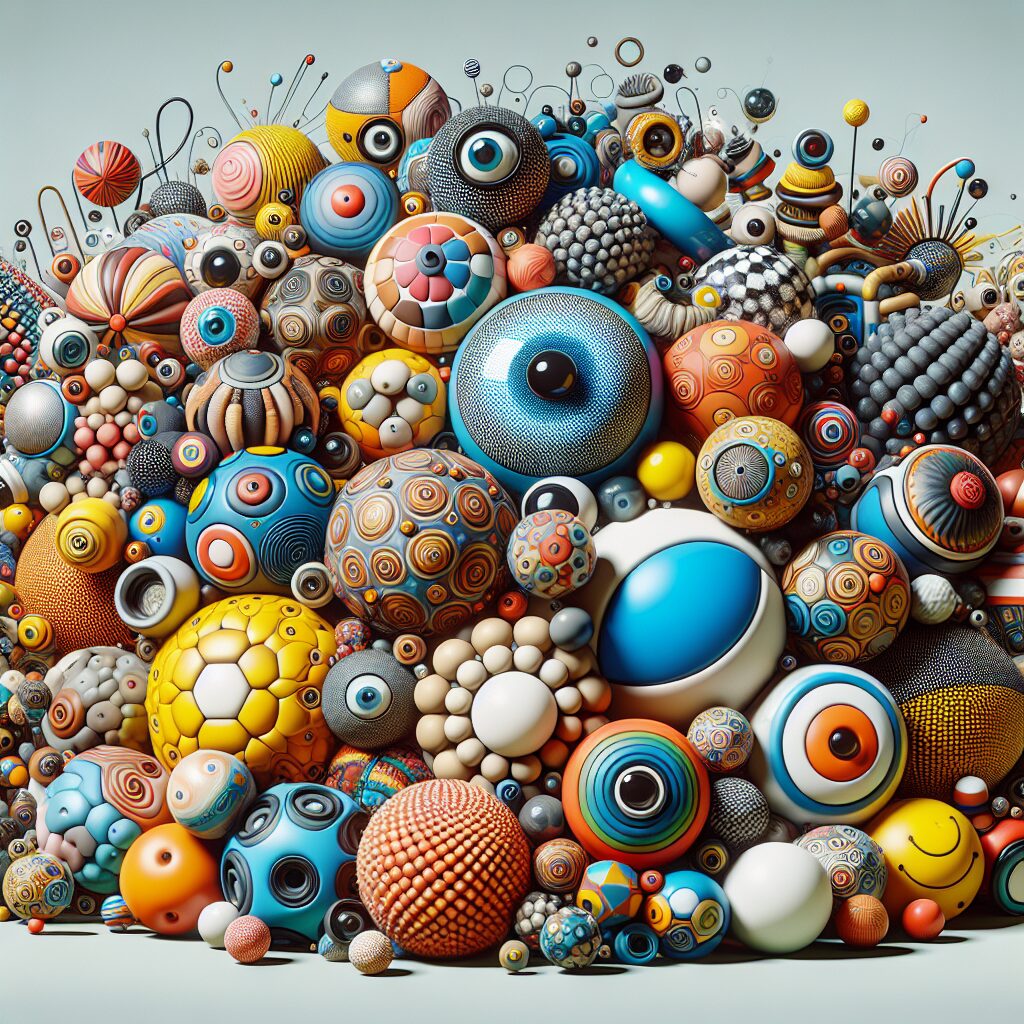Golf balls have been around since the 15th century, and over time they’ve evolved to become more aerodynamic and durable. One of the most noticeable features of a golf ball is the dimples on its surface. Dimples are integral to a golf ball’s performance, so it’s no surprise that manufacturers have created balls with different amounts of dimples. So, how many dimples are on a golf ball?A typical golf ball has 336 dimples.
Why Golf Balls Have Dimples?
Golf balls have dimples for a very important reason: to help them travel farther and straighter. The dimples on a golf ball create a thin layer of air around the surface of the ball, which is known as the boundary layer. This boundary layer helps to reduce drag, allowing the ball to travel longer distances with less effort from the golfer. Additionally, the dimples also create turbulence in the air around the ball, which helps to keep it stable and on its intended flight path.
The number of dimples on a golf ball also plays an important role in its performance. Generally speaking, more dimples mean more lift and less drag, resulting in longer distances. However, too many dimples can lead to instability and erratic flight paths due to increased turbulence. As such, modern golf balls typically have between 300 and 500 dimples of various sizes to strike a balance between distance and stability.
In short, golf balls have dimples because they help them travel farther and straighter than smooth-surfaced balls by reducing drag and increasing stability. The number of dimples plays an important role in striking this balance, with modern golf balls typically featuring between 300-500 dimples of various sizes.
How to Measure the Dimple Count on a Golf Ball
Measuring the dimple count on a golf ball is an important part of understanding the performance of the ball. The dimples on a golf ball provide lift and stability, and having the correct number of dimples can help you play better golf. To measure the dimple count of a golf ball, you will need a ruler, a magnifying glass, and some patience.
First, use the magnifying glass to get a close look at the surface of the ball. Count each indentation as one dimple, no matter how small it may be. It is important to remember that some dimples may be obscured from view, so it is best to take your time and look closely at each area of the golf ball. Once you have counted all of the visible indentations, use your ruler to measure their size and depth.
When measuring the depth of each dimple, make sure to measure from its center point outwards in all directions. This will help you get an accurate estimate as to how many total dimples are present on the golf ball. Once all measurements have been taken, add up your total and compare it with other golf balls with similar designs. Doing this will help ensure that your golf ball is performing optimally for your game.
In order to accurately measure the dimple count on a golf ball, patience and attention to detail are key. Taking your time when looking at each indentation and measuring its depth can ensure that you get an accurate count for your particular ball design and style of play. With practice and experience, you can easily become an expert in determining how many dimples are present on any given golf ball.
What Factors Affect Golf Ball Dimple Patterns?
Golf ball dimple patterns play an integral role in the performance of a golf ball. Each dimple pattern is designed to reduce drag and improve lift, allowing the ball to travel further and more accurately. The shape, number, size, and depth of the dimples all have an effect on the flight of the golf ball. Different dimple patterns can be used to achieve different effects.
The most common factor affecting dimple patterns is aerodynamics. The more aerodynamic a golf ball is, the better its performance on the course. The shape and size of the dimples can affect how air flows over and around them, which in turn affects lift and drag. A golf ball with shallower or larger dimples will generate more lift than a ball with deeper or smaller dimples.
Another factor that affects dimple patterns is spin rate. Dimples that are closer together tend to create higher spin rates than those farther apart. Higher spin rates result in greater control over shots, allowing for more accuracy during long-distance shots or around obstacles on the course.
The material of the golf ball also affects its dimple pattern. Certain materials react differently when heated or cooled, which can cause differences in their surface tensions and thus affect their aerodynamic properties. Tighter materials tend to produce a more uniform pattern while softer materials can produce variations in their dimple patterns due to their flexible nature.
Finally, temperature can also have an effect on golf ball dimple patterns as well as other factors such as air pressure and humidity. High temperatures can cause some materials to expand, affecting surface tension and thus aerodynamics while low temperatures can cause them to contract resulting in similar changes in surface tension and aerodynamics.
In summary, there are several factors that affect golf ball dimple patterns such as aerodynamics, spin rate, material used for construction, and temperature among others each having its own unique effect on performance of a golf ball when out on the course.
Standard Amount of Dimples on a Golf Ball
The standard amount of dimples on a golf ball is 336. It is generally accepted that this number of dimples provides the best performance for any given golf ball. The dimples are designed to provide maximum lift and reduce drag, which helps the ball to fly further and more accurately. The dimples also provide spin, which can be used to control the trajectory of the ball in flight and help it land in its intended area.
The number of dimples used on a golf ball can vary between models. Some balls may have more or less than 336 dimples, depending on their design and intended use. Higher-end balls are often designed with more dimples, while lower-end models may have fewer. The size and shape of the dimple can also vary slightly between models, although they are generally all round in shape with an average depth of 0.010 inches (0.25mm).
Golfers may choose to use different types of balls according to their individual playing style. Some players prefer using higher-end balls with more dimples for better performance, while others may opt for lower-end models with fewer dimples which provide a softer feel off the clubface. Ultimately, it is up to each individual player to decide which type of ball works best for their game.
Overall, the standard amount of dimples on a golf ball is 336, although this number can vary depending on the model and intended use. Each type of ball has its own unique characteristics that can affect performance, so it is important for players to decide which type works best for them before making a purchase decision.

The Benefits of Dimpled Golf Balls
Dimpled golf balls are becoming increasingly popular among golfers due to their ability to improve performance. The dimples on the surface of a golf ball help reduce air resistance, allowing the ball to go farther with each hit. This increased distance can give players an edge when attempting to hit a hole in one or even just stay in the fairway. Dimpled golf balls also have improved spin rates, making them more accurate and making it easier to control shots. With these improved features, dimpled golf balls can help players of all skill levels improve their game.
In addition to increasing performance, dimpled golf balls are also more durable than other types of balls. The dimples act as a cushion that helps absorb shock and reduce wear and tear on the ball over time. This means that players who purchase dimpled golf balls will get more use out of them before they need to be replaced. This makes them a great option for those looking to save money in the long run.
Finally, many dimpled golf balls come with additional features such as enhanced visibility in low light conditions or water resistance. These features can be incredibly helpful for golfers who play in different conditions or who need extra assistance seeing the ball while making shots. With these added benefits, dimpled golf balls are quickly becoming the preferred choice for both novice and expert golfers alike.
Different Types of Golf Ball Dimple Patterns
Golf balls are designed with dimples that have been carefully engineered to improve their performance in the air. There are a number of different types of dimple patterns available, each offering its own unique benefits. The three main types are the regular dimple pattern, the square dimple pattern, and the hexagonal dimple pattern.
The regular dimple pattern is the most common type used by golfers and has been around since golf balls were first created. This type of dimple pattern features evenly spaced circular depressions on the surface of the ball that help it move through the air more efficiently. Regular dimples also help reduce drag and increase lift, making them ideal for longer shots.
The square dimple pattern is becoming increasingly popular among golfers who seek more distance from their shots. This type of pattern features small square depressions on the surface of the ball which reduce drag and increase lift. Square dimples can also help create a spin effect which can be beneficial for shots that require accuracy or a certain trajectory.
The hexagonal dimple pattern is a relatively new type of design that is quickly gaining popularity among golfers looking for increased distance and performance from their shots. This type features hexagonal depressions on its surface which help reduce drag and increase lift even more than regular or square patterns. The hexagonal shape also helps create an additional spin effect which can be beneficial for certain types of shots.
No matter what type of ball you choose, understanding how each type affects your game can be beneficial in helping you get the most out of your shots. It’s important to remember that there is no one-size-fits-all solution when it comes to selecting a golf ball; experiment with different types to find what works best for you!
The History of Golf Ball Dimpling
Golf ball dimples are one of the most iconic features of this beloved sport, but where did they come from? The history of golf ball dimpling dates back to the late 19th century when golfers began experimenting with different designs. The earliest golf balls were smooth, but it was quickly discovered that adding indentations to the surface improved aerodynamics and distance. In 1898, a patent was issued for the first dimpled golf ball, and by the early 1900s dimples had become a standard feature on all golf balls.
The exact design of each golf ball’s dimple pattern is carefully crafted to maximize performance. The number of dimples can range from 300-500 depending on the model and manufacturer, and their placement is specifically designed to reduce drag. By reducing drag, the ball can travel farther and more accurately – an important factor in any golfer’s game!
In addition to improving aerodynamics and distance, dimples also help with spin control. As the ball rotates through the air, wind resistance creates a lift that can affect its trajectory. Dimples help reduce this lift so that you can control your shot more precisely. This is especially useful for experienced players who need precise control over their shots.
So next time you’re out on the course admiring your beautiful flight path, remember that there’s more to it than meets the eye! The dimple pattern on your golf ball might not be immediately noticeable, but it has an important role in helping you achieve optimal performance. Without this simple innovation in design, modern day golf wouldn’t be what it is today!

Conclusion
Golf ball dimples help to reduce drag and increase lift, which enable the ball to travel further and more accurately. Dimple patterns vary from model to model, but the average golf ball has between 300 and 500 dimples. The number of dimples can be as low as 178 or as high as 500, depending on the design of the ball. There are also other factors that affect how far a golf ball can fly, such as its weight, diameter, and its construction material. Golfers can choose which type of golf ball they want to use based on their individual preferences and playing style.
In conclusion, golfers should take into consideration the number of dimples on a golf ball when selecting one for their game. The number of dimples on a golf ball will affect how far it flies and how accurate it is when hit. A combination of factors including number of dimples, weight, diameter, and construction materials will all play a role in determining whether a particular golf ball is suitable for your game or not.




